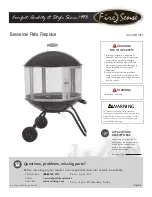
www.intertec.info
Operating Instructions SL VARITHERM DPA
HOM500327947Ien-7
Page 5 / 8
INTERTEC-Hess GmbH · Raffineriestr. 8 · 93333 Neustadt/Donau · Germany ·
+49 9445 9532-0 · [email protected]
NOTICE
Carefully remove
When removing from the packaging and during
transport, the connection line must not be stressed or
bent.
Free convection may not be impeded. You will find the
minimum distances and installation position in the
following figure.
The label needs to remain legible.
Please make sure that the absolute heat transfer
coefficient of the surrounding housing is not smaller than
0.5 W/K.
To ensure operational safety, the heater must operate
under temperature conditions which will NOT exceed the
trigger temperature of the limiter.
The operating temperatures must be adhered to.
The connection cable must be permanently installed up
to the inlet into the on-site junction box, taking the
permissible bending radius = 5 x outer diameter into
consideration.
In the dust Ex area, the applicable requirements of EN
60079-14 must be complied with.
Illustration 2:
Installation example horizontal VARITHERM with
TAE or TS and clearance
Illustration 3:
Installation example vertical VARITHERM with
TAE or TS with clearance
Additional installation material, such as rails or panels
and also junction boxes, are not included in the standard
scope of delivery (see
)
and must be ordered additionally.
8
Connection
INFO
The device may only be connected up and secured by a
trained person, taking into account the "rated voltage"
and "rated current" specified on the nameplate.
Where operating voltage = measured voltage (rated
voltage), then the heater is at its rated output. Mains
voltage fluctuations up to 10 % are then permissible.
Each heater with integrated TS thermostat must be
preceded by a 10 A fuse or a motor protection switch
with short-circuit and thermal quick release (set to 10 A)
as short-circuit protection. When using a heater without
integrated thermostat, the fuse protection can be
selected according to the cross-section of the supply
cable.
Additional equipotential bonding is required. The
terminal block designated for this purpose has the
ground sign.
In a TT or TN system, a residual current device (RCD)
must be used where the measured triggering residual
current does not exceed 100 mA. Residual current
devices with a measured triggering residual current of 30
mA are preferable. In an IT system, an insulation


























